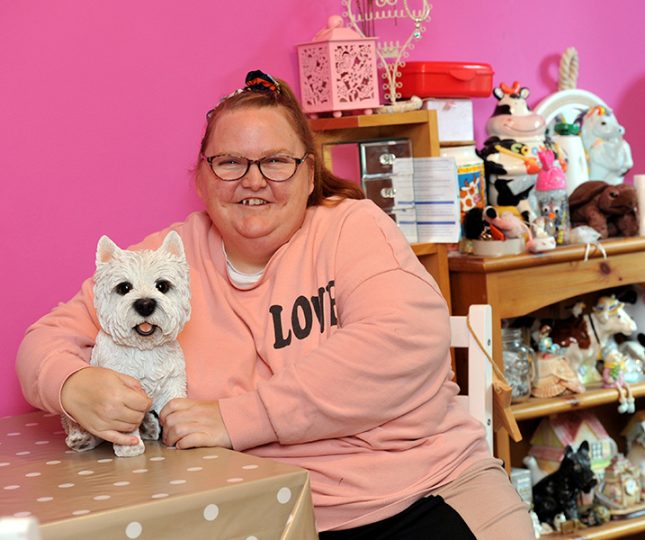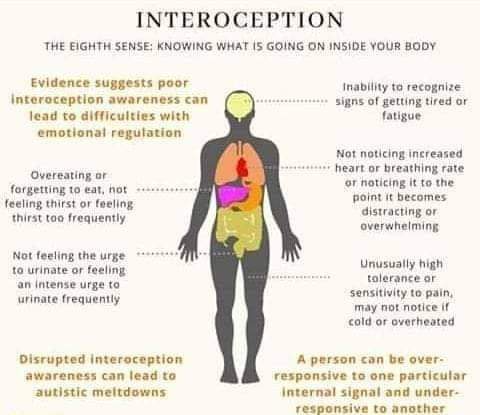Join our team
Do you have the passion and determination to make a difference in the lives of people with complex needs?

Do you have the passion and determination to make a difference in the lives of people with complex needs?
 As an experienced Speech and Language Therapist (SaLT) Dalia Coleman is an important part of the multi-disciplinary team at Precious Homes. In 2019, after twelve months in the role, Dalia opted to train as a Sensory Integration Practitioner, allowing her to better understand and support the needs of the Service Users we support all around the UK. We chatted to Dalia to find out more about what motivated her to do the course and the benefits to our service users.
As an experienced Speech and Language Therapist (SaLT) Dalia Coleman is an important part of the multi-disciplinary team at Precious Homes. In 2019, after twelve months in the role, Dalia opted to train as a Sensory Integration Practitioner, allowing her to better understand and support the needs of the Service Users we support all around the UK. We chatted to Dalia to find out more about what motivated her to do the course and the benefits to our service users.
Whilst working with a specific Service User in a Speech and Language Therapy session I would use a number of visual and tactile resources to try and engage him. However, I realised that these sensory toys that I was using were overstimulating the Service User and causing him to become hyper and unfocussed rather than becoming more engaged in the task as intended. As a Speech and Language Therapist, I’ve worked with people with complex and varied communication difficulties. I realised, however, that I had little understanding about the service users’ sensory integration needs.
It was this realisation that made me want to learn more about Sensory Integration. Lots of the people we support at Precious have sensory integration difficulties. A large percentage of the service users we support have a diagnosis of Autism (or ASD). Sensory integration difficulties are included as one of the diagnostic criteria for autistic people and so therefore many of the people we support – including those with ASD and different diagnoses – have sensory integration difficulties. I knew that doing the training would give me a better understanding of service users’ sensory integration needs and give me additional tools to support the Service Users’ communication and behaviour. Thankfully, the team at Precious agreed and have supported me to achieve the qualification.
Sensory Integration is all about how our brain receives and integrates sensory information so that we can do the things we need to do in our everyday life. For people who have sensory difficulties – the brain has trouble processing the sensory stimuli and struggles to make sense of it all.
While most of us are aware of having five senses – touch, hearing, taste, smell and sight – sensory processing also includes three other senses: vestibular, which is balance; and proprioception, which is body awareness and Interoception which is a sense that provides information about the internal condition of our body. Awareness of these body sensations enables us to experience essential feelings such as hunger, fullness, thirst and pain.

People with Sensory Integration difficulties can have difficulties modulating sensory information, meaning that they can be over or under-responsive to sensory stimuli, which means some will seek stimulation, while others may avoid it – the National Autistic Society has a breakdown of what over and under responsivity might look like for each of the senses – from avoiding certain clothing, seeking out intense movement or pressure, being sensitive to noise, eating a restricted diet and much more.
This video helps to explain:
People who find it difficult to modulate the sensory information can experience sensory overload, which can cause severe stress and anxiety. This can result in withdrawal, distressed behaviour or meltdowns. Sensory integration is all about understanding the senses and how the input is processed, then making small changes to the environment, introducing Ayres Sensory Integration therapy or techniques from the therapy e.g.graded exposure to stimulation. All of the above will be carefully designed around the needs of each person.
There is research that states that working on sensory-motor skills can improve social communication and can lead to people achieving greater independence. Working on developing someone’s independence is of great importance to the people we support, their families and their support workers.
 Research suggests that 80% of Autistic people have sensory modulation difficulties. As a provider of accommodation and support to autistic adults, understanding sensory processing is vital to ensuring we deliver the right support.
Research suggests that 80% of Autistic people have sensory modulation difficulties. As a provider of accommodation and support to autistic adults, understanding sensory processing is vital to ensuring we deliver the right support.
As well as working directly with individuals that need direct support to recommend tailored strategies that their support team can implement, I’ll be rolling out training to all teams at Precious to ensure a better understanding of sensory needs across the board.
This will help individual service users to be calmer and happier, but it will also prove very useful to our staff teams. The stark reality is that sensory overstimulation can result in meltdowns and a fight or flight response, which can be difficult for all involved. Having a better understanding of each person’s sensory profile and changing the environment and our approach to avoid triggers will help reduce incidents across the board.
The MDT offers a wide range of support and, being in-house at Precious Homes rather than relying on outside support, we can act fast when needed. Those with very complex needs will likely have the funding in place to access MDT support as part of their care package. For those that don’t, we can help when they are referred by their managers for extra MDT support. Most importantly, we’re here to offer advice and support for all – and improving training on sensory processing will mean everyone stands to benefit.
The course was a massive eye-opener for me and I loved the fact that I’ve now got a range of very practical strategies that can be used to help people. The key thing for me is that helping people to regulate their senses can have a huge impact on their ability to communicate – as a speech and language therapist, that’s gold dust!